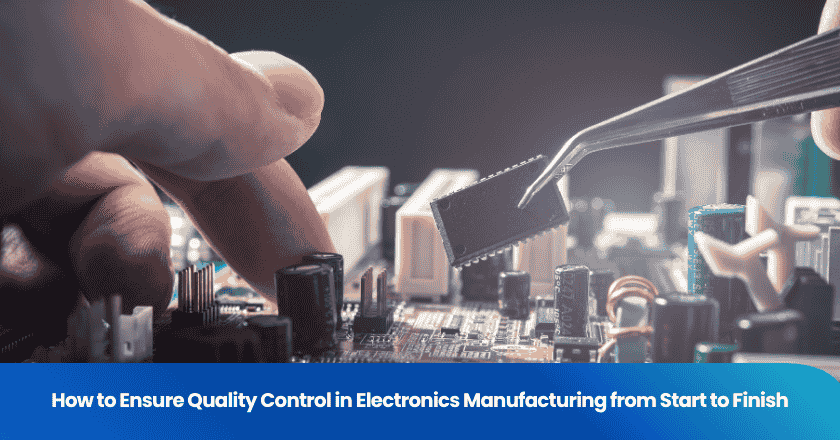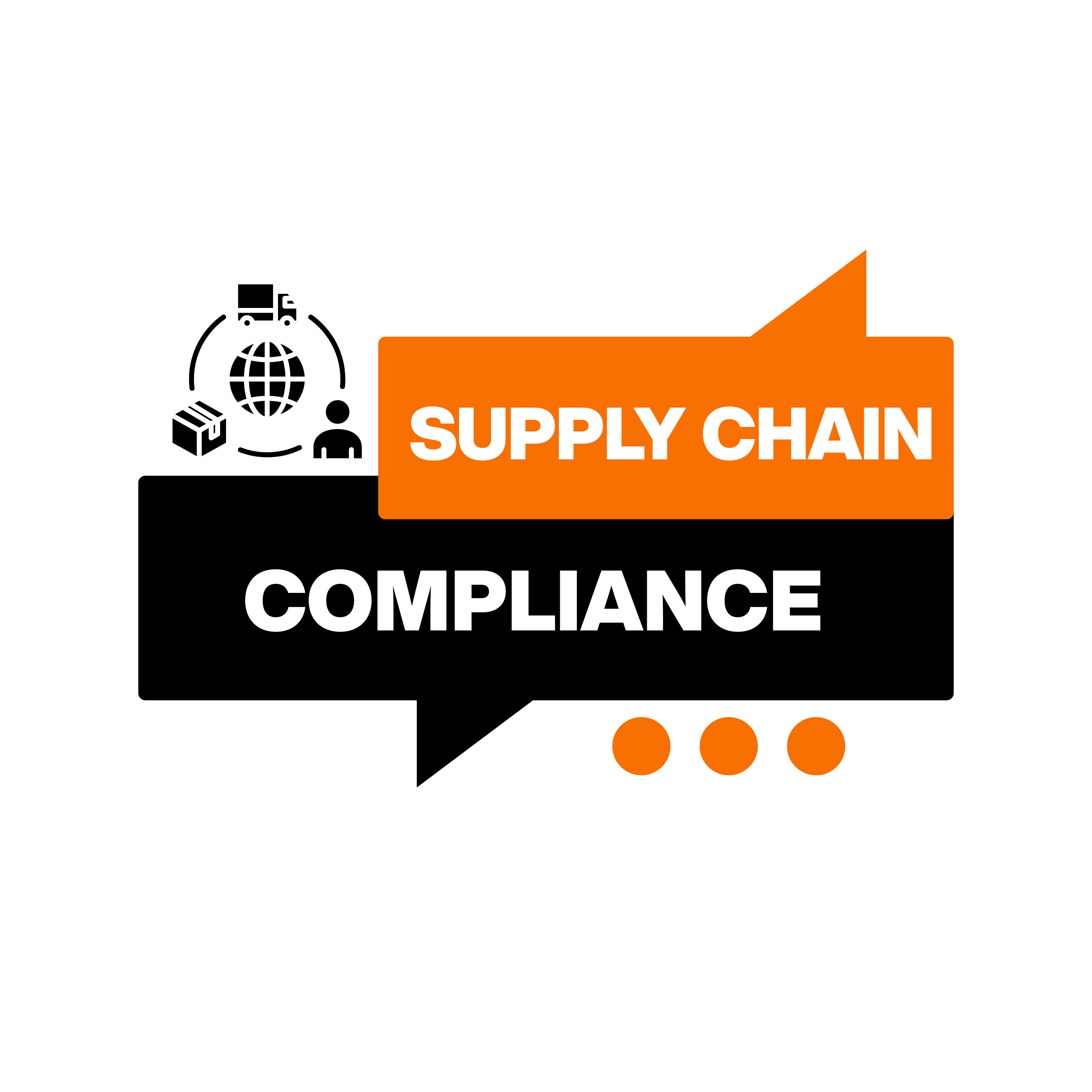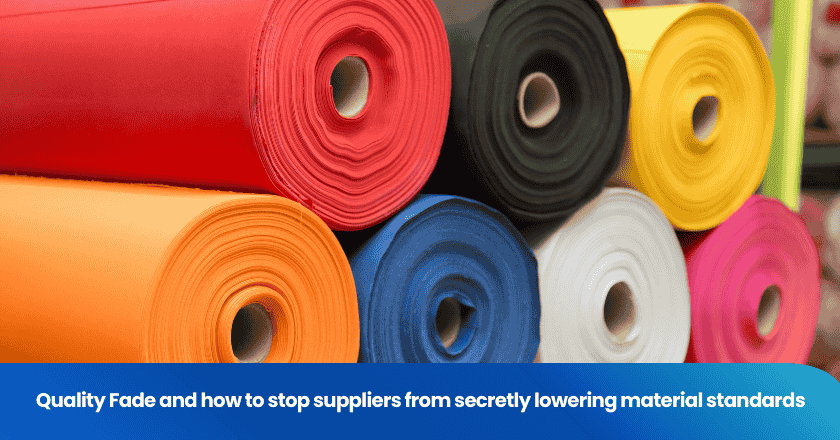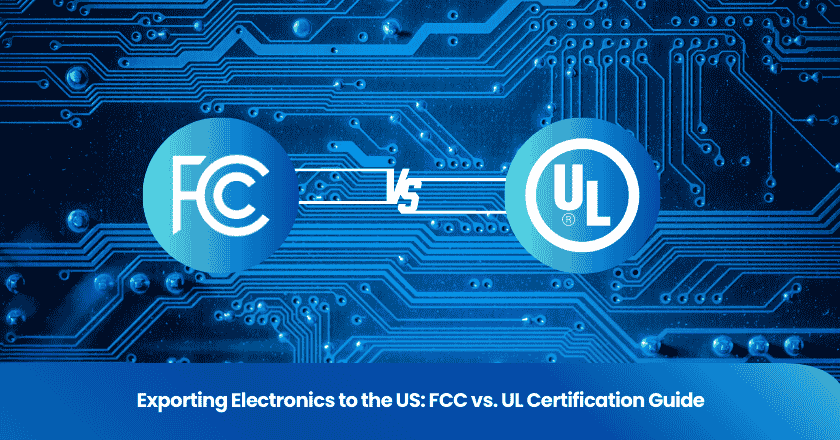
You face increasing pressure to deliver reliable electronics in a competitive market. Integrating electronics quality control from the initial design through to delivery helps you avoid costly defects and strengthens your product's reputation. Consider how different quality control methods impact reliability:
| Quality Control Method | Impact on Reliability |
|---|---|
| Statistical Process Control | Identifies trends before defects occur |
| In-circuit Testing | Detects manufacturing defects early |
| Advanced Optical Inspection | Finds solder and assembly issues |
| Design of Experiments | Optimizes processes for quality and efficiency |
A step-by-step guide ensures you maintain high standards at every stage. Treat quality control as a continuous, systematic process to achieve consistent results.
Key Takeaways
- Integrate quality control from design to delivery to catch defects early and improve product reliability.
- Set clear objectives for your quality control program, focusing on inspections, defect detection, and compliance with standards.
- Use a step-by-step approach to quality control, ensuring checks at every stage of the manufacturing process.
- Invest in staff training to enhance skills in quality control and improve overall product quality.
- Maintain thorough documentation and traceability to support compliance and facilitate quick resolution of quality issues.
Why Electronics Quality Control Matters
Objectives
You need clear objectives to guide your electronics quality control program. Leading electronics manufacturing companies focus on systematic inspections, defect detection, and compliance with industry standards. These objectives help you maintain product reliability and meet customer expectations.
| Objective | Description |
|---|---|
| Systematic Inspections | Involves checks at various production stages to ensure quality. |
| Defect Detection | Aims to identify and eliminate defects to maintain product reliability. |
| Compliance with Industry Standards | Ensures adherence to standards like ISO 9001:2015 standards and RoHS for quality assurance. |
Quality control also helps you reduce costs by identifying issues early. You prevent costly rework and minimize the risk of product recalls. When you follow a structured quality management approach, you build a foundation for consistent results.
Risks
Ignoring electronic quality control exposes you to significant risks. Poor quality management can result in defective products reaching the market, which may lead to safety hazards for consumers. Regulatory violations can attract scrutiny and penalties.
- Defective products can damage your reputation.
- Safety hazards may cause harm to users.
- Regulatory violations can result in fines or legal action.
- Faulty products may need to be withdrawn, increasing costs.
- Consumers affected by defects may pursue litigation.
You must address these risks to protect your business and maintain trust with your customers.
Impact
Effective quality control has a direct impact on customer satisfaction and return rates in electronics manufacturing. Consistent product quality enhances customer trust and reduces the likelihood of returns.
A standardized quality assurance process helps you foster loyalty and improve your brand reputation. For example, a manufacturer reduced its Quality Control Sample Failure Rate from 4% to 1.5% by investing in employee training and advanced monitoring technology. This improvement lowered costs and boosted customer satisfaction scores. When you prioritize electronics quality control, you create a positive cycle of reliability and customer loyalty.
Step-by-Step Guide: Design to Delivery
A robust step-by-step guide helps you maintain control over every phase of the electronics manufacturing process. You can reduce risks and improve product reliability by integrating quality checks from the earliest design stages through to final delivery.
The following table outlines the chronological process for quality control in electronics manufacturing, highlighting the key actions at each stage:
| Stage | Description | Key Actions |
|---|---|---|
| 1 | Ideation and Requirement Analysis | Brainstorm product functionality and user needs, define constraints, research market trends, outline regulatory requirements |
| 2 | Concept Design and Initial Prototyping | System architecture planning, alpha prototypes, simulation of circuits, gathering feedback |
| 3 | Detailed Electronic Design Engineering | Full schematic and PCB layout, component selection, firmware development, design for manufacturability |
| 4 | Functional Prototyping and Testing | Electrical functionality testing, thermal stress testing, EMI/EMC compliance |
| 5 | Pre-Production Planning | Finalizing BOM, optimizing assembly processes, building production tooling |
| 6 | Full-Scale Manufacturing and Quality Assurance | Supplier audits, quality checks, software pre-loading |
| 7 | Market Launch and User Feedback | Marketing planning, customer support readiness, real-time user feedback channels |
You need to integrate quality control in electronics manufacturing at every step. This approach ensures that you catch issues early, prevent costly errors, and deliver reliable products to your customers.
Design Checks
You set the foundation for effective quality control during the design phase. Design Verification Testing (DVT) plays a critical role in ensuring your designs meet both specifications and manufacturability requirements. DVT helps you identify potential issues before they become costly problems. It also verifies compliance with regulatory standards, which reduces the risk of recalls and legal complications. By accelerating time-to-market, DVT allows you to detect design flaws quickly and avoid expensive redesigns.
You also benefit from Design for Manufacturability (DFM) checks. These checks ensure your PCB designs match manufacturing capabilities, which reduces fabrication defects. Performing DFM checks at various design stages allows you to catch and resolve issues early, making changes quick and inexpensive.
Tip: Early and frequent design checks help you avoid delays and ensure your product meets both customer and regulatory expectations.
Prototyping
Prototyping gives you a practical way to identify and resolve quality issues before full-scale production. You can use several prototyping methods, each serving a unique purpose in the electronics manufacturing process:
| Prototyping Method | Purpose |
|---|---|
| Proof-of-Concept Prototypes | Demonstrate core functionality and technical feasibility using basic prototypes. |
| Functional Prototypes | Combine working technology with design elements for near-final representation and quality control. |
| Appearance Models | Help visualize the final product for marketing and user experience testing before mass production. |
| Advanced Software Tools | Utilize 3D design modeling and circuit simulation to identify potential issues before physical prototyping. |
| Pre-production Testing | Conduct thorough testing to identify defects before full-scale production, ensuring quality. |
You should use proof-of-concept prototypes to confirm technical feasibility. Functional prototypes allow you to test both performance and design. Appearance models help you evaluate the product’s look and feel, which is important for user experience. Advanced software tools, such as 3D modeling and circuit simulation, let you spot issues before building physical prototypes. Pre-production testing ensures you identify and fix defects before starting mass production.
Note: Prototyping is not just about building a sample. It is a critical step in your quality management system that helps you validate every aspect of your design.
Documentation
Thorough documentation supports quality assurance throughout the electronic manufacturing process. You need to document every step, from initial design to final delivery. This practice ensures compliance with internal policies, customer specifications, and regulatory demands. Documentation also facilitates traceability, allowing you to track every detail in the manufacturing process.
- Documentation ensures compliance with internal and external requirements.
- It enables traceability, making it easier to identify and resolve issues.
- Effective documentation improves communication among teams, which is crucial for maintaining high-quality standards.
You should keep detailed records of design changes, test results, and process adjustments. This habit helps you maintain consistency and supports continuous improvement. When you document thoroughly, you create a reliable reference for future projects and audits.
Remember: Good documentation is the backbone of effective quality control in electronics manufacturing. It keeps your teams aligned and your processes transparent.
By following this step-by-step guide, you build a strong foundation for electronic quality control. You ensure that every stage of the manufacturing process receives the attention it deserves, leading to higher product reliability and customer satisfaction.
Sourcing and Inspection
Supplier Criteria
You set the stage for effective quality control by choosing the right suppliers. In electronics manufacturing, you need to evaluate suppliers using clear criteria. Start by considering cost, quality, and delivery performance. You should also look at product specifications, regulatory compliance, and performance standards. The following table summarizes key criteria for supplier selection:
| Criteria | Description |
|---|---|
| Product Specifications | Clearly outline technical specifications, tolerances, and functional expectations. |
| Regulatory Compliance | Ensure adherence to industry-specific regulations such as ISO 9001, IATF 16949, GMP, or FDA. |
| Performance Standards | Define acceptable defect rates, on-time delivery expectations, and compliance benchmarks. |
| Testing and Inspection Criteria | Specify the frequency and type of inspections required before materials are accepted. |
You should conduct supplier qualification audits and risk assessments. Trial production runs and sample testing help you verify product quality before full-scale manufacturing. Reference checks and supplier self-assessments add another layer of assurance. Continuous monitoring of supplier performance ensures you maintain high standards throughout the manufacturing process.
Raw Material Inspection
You cannot achieve reliable electronics manufacturing without rigorous raw material inspection. Before you begin pcb assembly or pcb manufacturing, you need to check incoming materials for compliance with your specifications. Use pcb inspection methods such as visual checks, electrical testing, and dimensional analysis. These steps help you catch defects early and prevent them from entering the electronic manufacturing process.
Keep detailed records of historical quality, production capacity, and quality management systems. This documentation supports traceability and strengthens your quality assurance program. By inspecting raw materials at every stage, you reduce the risk of defects and improve the overall reliability of your manufacturing process.
Tip: Consistent raw material inspection forms the backbone of electronic quality control and supports long-term product reliability.
Preventing Counterfeits
Counterfeit components threaten the integrity of your electronics manufacturing process. You need to source only from verified, traceable distributors. Perform both electrical and visual testing to confirm authenticity. Follow industry standards like AS6081 and IDEA-STD-1010-B to guide your inspection and procurement practices.
Establish a documented counterfeit prevention policy within your procurement process. This policy should outline steps for verification and reporting. By taking these actions, you protect your pcb assembly and electronic manufacturing services from the risks associated with counterfeit parts.
Remember: Preventing counterfeits is essential for maintaining quality assurance and protecting your reputation in the electronics industry.
Assembly and In-Process Quality Control
In-Line Inspections
You need to implement in-line inspections to maintain high standards during the electronics manufacturing process. These inspections catch defects early and prevent costly rework in pcb assembly and pcb manufacturing. Advanced inspection protocols, such as Automated Optical Inspection (AOI) and X-ray analysis, help you detect hidden flaws like solder voids and misplaced components. AOI systems scan PCBs and compare them to stored standards, checking for correct polarity and solder quality. Placing AOI at key points—after solder paste application, before and after reflow soldering—ensures you identify issues from previous stages. Functional testing validates product performance under real-world conditions, supporting quality assurance throughout the manufacturing process.
Staff Training
You strengthen electronic quality control by investing in staff training. Well-trained employees understand inspection tools, blueprints, and statistical quality control techniques. Technical skills ensure accurate defect detection during the pcba manufacturing process. Soft skills, such as problem-solving and communication, improve collaboration and reduce errors. Ongoing education keeps your team updated on new technologies and methodologies in electronics manufacturing. Tailored training clarifies responsibilities for each role, supporting effective quality management. For example, training on Six Sigma principles helps reduce process variability and enhances product quality in electronic manufacturing services.
Tip: Regular training and quality awareness programs reduce human error and improve overall product quality.
Process Records
You must maintain accurate process records to support quality assurance in electronics manufacturing. Essential records include receiving and inspecting raw materials, testing products for quality, and reporting testing metrics. You should provide feedback to quality auditors and the manufacturing floor, and discard products or batches that fail to meet expectations. Data integrity ensures your electronic records remain accurate and reliable. An audit trail tracks changes, including timestamps and users, while electronic signatures establish secure approvals. These records help you monitor each step of the manufacturing process and support continuous improvement in electronic quality control.
- Receiving and inspecting raw material
- Testing the product for quality
- Reporting and recording testing metrics and results
- Giving feedback to quality auditors and the manufacturing floor
- Discarding products and batches that fail to meet quality expectations
Note: Maintaining detailed process records is vital for traceability and compliance in electronics manufacturing.
Inspection and Quality Control
Visual Checks
You begin the inspection and quality control process with visual inspection. This step helps you catch obvious defects in pcb assembly, such as solder bridges, missing components, or misaligned parts. Manual visual inspection remains important for identifying cosmetic flaws and issues that automated systems might miss. However, you must recognize its limitations. Human inspectors often experience fatigue, which leads to higher defect escape rates and slower inspection speeds. For example, manual visual inspection typically detects defects down to 0.1mm² and processes less than 0.5 boards per minute. Labor costs also rise due to lengthy training and the need for skilled staff.
Tip: Combine manual visual inspection with automated tools to improve accuracy and efficiency in your electronics manufacturing process.
Automated Testing
Automated Optical Inspection (AOI) systems transform pcb inspection methods in electronics manufacturing. AOI detects defects as small as 0.01mm² and inspects up to 20 boards per minute on dual-lane lines. This technology delivers consistent results, with CpK values above 1.67, increasing yield by up to 40%. You use AOI to check solder quality, component placement, and polarity during pcb assembly. Automated testing and quality control reduce human error and speed up the manufacturing process. The table below compares AOI and manual inspection:
| Metric | AOI Inspection | Manual Inspection | Improvement |
|---|---|---|---|
| Precision | 0.01mm² defects | 0.1mm² defects | 10x better |
| Speed | 20 boards/minute | 0.3 boards/minute | 66x faster |
| Consistency | CpK ≥1.67 | CpK ≤1.0 | Yield ↑40% |
You should integrate AOI at multiple stages to catch defects early and maintain high standards in electronic manufacturing services.
Functional Testing
Functional testing ensures your products work as intended before leaving the facility. You simulate real-world scenarios to verify that all components, such as sensors and displays, operate together seamlessly. In-circuit testing (ICT) checks the placement and operation of individual components during the manufacturing process. You also conduct final product testing to confirm safety and compliance with industry standards. Life testing and reliability assessments evaluate long-term durability through accelerated aging and stress tests. These procedures form the backbone of electronic quality control and help you deliver reliable products through your electronic manufacturing services.
You should follow a structured approach to inspection and quality control throughout the manufacturing process:
- Initial Production Check (IPC): Verify raw materials and tooling before production starts.
- During Production Inspection (DUPRO): Inspect samples during production to catch defects early.
- Final Random Inspection (FRI): Conduct random checks before shipment to ensure quality.
- Loading Supervision (LS): Confirm correct products are loaded and in good condition.
- Laboratory Testing: Test for safety and compliance, especially for electronics.
By combining visual inspection, automated testing, and functional test procedures, you strengthen your testing and quality control program and improve the reliability of your electronics manufacturing process.

Final Checks and Packaging
End-of-Line Inspection
You must perform end-of-line inspection to guarantee that every electronic product meets strict quality standards before shipment. Automated inspection systems play a vital role in electronic quality control. These systems detect defects such as solder quality issues and component placement errors during pcb assembly. In semiconductor manufacturing, automated systems identify microcracks, contamination, and overlay misalignment. Even minor flaws can cause total product failure, so precision is essential. You should combine automated inspection with manual visual inspection to catch surface-level defects and cosmetic issues. Visual inspection helps you spot scratches, dents, and contamination that machines might miss. Functional testing at this stage confirms that all components work together as intended, supporting final product testing and ensuring reliability.
Packaging Standards
You need to follow established packaging standards to protect electronics during shipment. Start by using cushioning materials like foam inserts, bubble wrap, or air pillows to absorb impacts and vibrations. Anti-static protection is crucial; use ESD-safe materials such as anti-static bags or foam to prevent electrostatic discharge. Double-boxing adds another layer of security. Place the electronics in a smaller cushioned box, then pack that box into a larger one. These steps help maintain product integrity and reduce damage risk during transit. Visual inspection of packaging ensures that all protective measures are in place and that labeling is accurate. Functional testing of packaging materials confirms their ability to withstand stress and environmental factors.
1. Cushioning materials: Use foam inserts, bubble wrap, or air pillows to absorb impacts and vibrations.
2. Anti-Static protection: Utilize ESD-safe materials like anti-static bags or foam.
3. Double-boxing: Place the electronics in a smaller cushioned box, then pack that box into a larger one for added protection.
Tip: Consistent application of packaging standards reduces returns and increases customer satisfaction.
Traceability
You must maintain traceability throughout the packaging process to resolve quality issues quickly. Traceability allows you to document and track every component and process, making it easier to identify the root cause of defects. Unique barcodes for each component and finished product are tracked from assembly to final packaging. Automatic verification of barcodes against container labels before shipment helps prevent errors. Accurate documentation supports regulatory compliance and enables rapid, targeted recall capabilities. A robust packaging inspection system helps you track non-conformance trends and supports decision-making. Traceability strengthens business continuity and builds customer confidence in your electronic quality control program.
Note: Effective traceability ensures you can respond rapidly to quality concerns and maintain high standards in electronics manufacturing.
Shipment and Feedback
Pre-Shipment Audit
You need to conduct a thorough pre-shipment audit to ensure your electronics meet all quality standards before leaving the factory. This process involves several critical steps:
1. Arrive at the factory and meet with the sales manager to begin the inspection.
2. Use AQL sampling to select the quantity of products for examination.
3. Perform special tests, such as charging tests, for electronic products.
4. Check packaging and labeling to prevent issues during transit.
5. Carry out visual inspection to identify any defects.
6. Test product functionality through final product testing.
7. Verify physical requirements by measuring product dimensions.
8. Confirm barcode accuracy to avoid shipping delays.
9. Conduct carton drop tests to assess packaging durability.
10. Compile and dispatch a detailed report covering all findings.
By following these steps, you reduce the risk of defects reaching your customers and strengthen your electronic quality control process.
Customer Feedback
You play a vital role in improving quality by collecting and analyzing customer feedback. This feedback highlights specific areas where your products or processes may need enhancement. When you establish feedback loops, you can investigate reported issues and take corrective actions. This approach ensures your products evolve to meet customer expectations. Visual inspection and manual visual inspection of returned products provide valuable insights into recurring problems. Your commitment to listening to customers drives continuous improvement in electronics manufacturing.
Tip: Use customer feedback as a tool for refining your pcb inspection methods and boosting satisfaction.
Improvement Loop
You create a culture of continuous improvement by acting on shipment and feedback data. Effective strategies include:
- Establishing robust feedback loops to collect and analyze data from each production run.
- Treating quality control as a continuous cycle, not just a series of checkpoints.
- Conducting root cause analysis to understand why issues occur and prevent them from happening again.
- Sharing inspection findings with suppliers and developing corrective action plans when problems arise.
You monitor the results of these actions and refine your processes over time. This approach ensures your electronic quality control system remains effective and responsive to new challenges.
Electronic Quality Control Challenges
Modern electronics manufacturing faces a range of challenges that can impact your ability to deliver reliable products. You must address these issues at every stage of the manufacturing process to maintain high standards and minimize common defects.
Supply Chain
Supply chain variability remains one of the most significant challenges in electronic quality control. Global shortages, logistical delays, and reliance on multiple vendors can disrupt your manufacturing process. These disruptions often lead to inconsistencies in component quality and increase the risk of defects. You may notice more issues during shift changes or plant transitions, especially when processes depend on individual operator judgment. To reduce these risks, centralize your Standard Operating Procedures (SOPs) and standardize workflows. This approach helps you maintain consistent quality, even when your supply chain faces unexpected changes.
You must also manage complex supply chains with multiple vendors and long lead times. Consistent quality across high-volume production requires careful planning and robust pcb inspection methods.
Counterfeit Risks
Counterfeit components pose a serious threat to electronics manufacturing. Cost pressures and extended lead times can push you to source parts from unauthorized suppliers, increasing the risk of counterfeit items entering your supply chain. The global trade in counterfeit electronics now reaches up to $1 trillion annually, making this a critical issue. To protect your manufacturing process, work only with reputable suppliers and enforce strict component traceability. Collaborate with partners who have established procurement and inspection protocols. These steps help you detect counterfeit parts early, reducing the risk of common defects and failures during final product testing.
Training
Your staff plays a vital role in maintaining electronic quality control. High turnover and operator-dependent processes can lead to inconsistent results and missed defects during manual visual inspection.
Effective training programs focus on three key skill areas:
| Skill Type | Application in Quality Control |
|---|---|
| Quality Control Skills | Identify defects early, minimize waste, ensure specifications are met |
| Continuous Improvement Skills | Standardize processes, eliminate bottlenecks, reduce costs |
| Communication and Documentation | Implement process maps, document compliance, deliver updates |
You should invest in ongoing training to keep your team updated on the latest manufacturing process standards and technologies. Well-trained staff can spot issues early, document findings accurately, and support continuous improvement in electronics quality control.
Tip: Addressing challenges in electronic quality control requires a proactive approach to supply chain management, counterfeit prevention, and staff development.
You ensure product reliability by following a step-by-step approach to electronic quality control. Systematic inspection at every stage helps you catch defects early and maintain high standards. Stay proactive by reviewing your processes regularly. Embrace new technologies and adapt to industry changes. Start by training your team, updating documentation, and setting clear quality benchmarks. Continuous improvement keeps your manufacturing process strong.
FAQ
What is the most important step in electronics quality control?
You need to focus on early detection. Design checks and prototyping help you catch issues before production. This step saves time and money while ensuring product reliability.
How often should you inspect electronic components during manufacturing?
You should inspect at every major stage—before, during, and after assembly. Regular checks help you identify defects early and maintain consistent quality.
Why is traceability important in electronics manufacturing?
Traceability lets you track every component and process. You can quickly find the source of defects and take corrective action. This practice supports compliance and customer trust.
How can you prevent counterfeit components from entering your supply chain?
You should source only from verified suppliers. Use both visual and electrical testing. Document every purchase and follow industry standards for counterfeit prevention.
What role does staff training play in quality control?
Staff training ensures your team understands inspection tools and quality standards. Well-trained employees spot defects faster and help maintain high product quality.
Grow your business with TradeAider Service
Click the button below to directly enter the TradeAider Service System. The simple steps from booking and payment to receiving reports are easy to operate.




